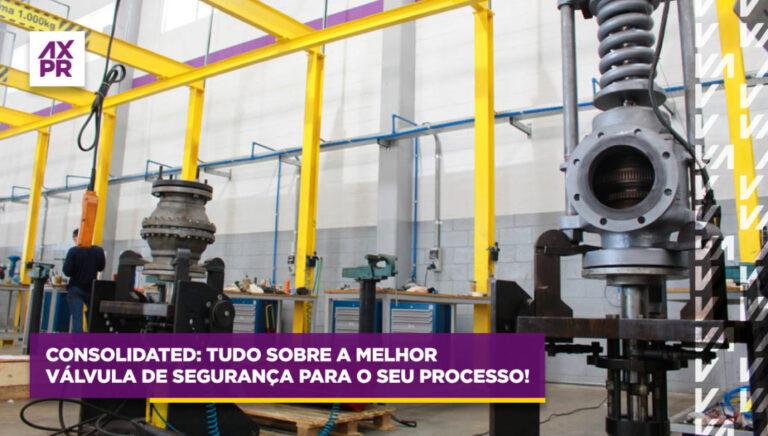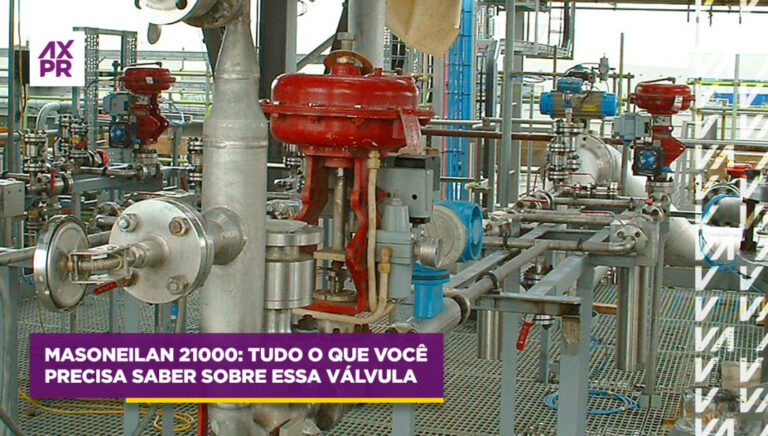Understand everything about this component that assists in the movement of valves.
In our previous article, we saw how electric actuators work – if you haven't checked it out yet, we suggest accessing it because the content is very interesting – in today's article, we will check out a complete guide on pneumatic actuators.
For this, we will cover the following topics:
- What is a pneumatic actuator;
- Types of pneumatic actuators;
- Different movements: linear and rotary;
- What are the models and their advantages;
- Where to find the best pneumatic actuators in the market.
Ready for another read? Remember that to get this complete content and the other rich materials we produce, just click here!
What is a pneumatic actuator?
First, let's understand how this component works. In summary, we can say that pneumatic actuators are devices operated by compressed air originating from a controller, positioner, or other external source.
From this, this solution converts compressed air into mechanical movement, allowing the valve plug to move. It is extremely simple, economical, and versatile.
All these qualities make them one of the most used types because they can easily be adapted to various sizes of valves, both linear and rotary, can be configured in fail-open or fail-closed type, and are much cheaper compared to electric and hydraulic actuators.
Now that you know a little about how this device works, let's dive into the types of pneumatic actuators.
Types of pneumatic actuators
Pneumatic actuators can be divided into: single-acting and double-acting.
Single-acting: Typically, this type of actuator uses springs – or even gravity itself – to perform the opening and closing movement in only one direction.
In summary, we can say that this device uses air pressure to move the mechanism through the compression of the springs. After performing its displacement, it returns to its original position once all the air pressure leaves the system.
Double-acting: On the other hand, we can say that double-acting pneumatic actuators are devices that use the pneumatic energy provided by compressed air to move in both directions, that is, both to open and to close.
Thus, this device alternates the port that receives the compressed air, using twice as much energy to perform the movement. We should also emphasize that the forward force of this type of actuator is greater than the return force.
Beyond this subdivision, we can also categorize the movement of pneumatic actuators as linear or rotary. Check each of them below!
Linear and Rotary Pneumatic Actuators
To delve a little deeper into their operation, let's now understand the different types of movements:
Linear: As expected by its name, this type of actuator performs linear displacement, being widely used for industrial automation in general, both in machinery and processes. In addition, it has different diameters that allow reaching various actuating forces.
Rotary: Rotary pneumatic actuators are used to automate the actuation of process valves, so that, with air pressure, the actuator rotates 90 degrees to open or close, such as ball or butterfly valves.
Now that everything is clarified, let's see the models of pneumatic actuators next.
What are the models available in the market?
For each type of operation, there is an ideal model of pneumatic actuator. Among them, the most common ones are the diaphragm and piston. Learn about each of them below.
Diaphragm and Spring Pneumatic Actuators
This model is basically formed by a flexible membrane called a diaphragm, which is made of rubber, allowing the plug to move, for example, from the closed position to the fully open position.
Even though there is the option to be double-acting, this model is usually single-acting, where the air pressure acts only on one side of the diaphragm, causing uni-directional movement in the plug.
Finally, we can mention some advantages, such as:
- Low cost;
- Fail-safe position by inert fail;
- Quick response;
- Low supply air pressure;
- Does not necessarily require a positioner;
- Ideal for electrically hazardous applications;
- Ease of maintenance.
In the Masoneilan portfolio, we can mention, for example, the 87/88 model used in globe control valves. In addition to its fail-safe operation of the mechanical spring, this model offers applications from low to high pressure drop and manual operation to mechanically position the valve.
Piston Pneumatic Actuators
Also known as a pneumatic cylinder, this actuator model has linear movement but can be single or double acting, and unlike the diaphragm, it can withstand higher inlet pressures.
Thus, piston-type pneumatic actuators basically work as follows: Compressed air is placed in a piston contained within a cylinder, allowing its displacement through the cylinder.
In addition, we can mention the following advantages:
- Operate at high speed, as they have high torque capacity;
- They are lighter;
- They are compact;
- Have quick response;
- Can be used at high environmental temperatures;
- Are adaptable, as they work on various valve torque requirements;
- Safe in applications where there is a risk, such as electrically hazardous processes.
For this model, we can mention, for example, the Masoneilan 51/52/53 actuator, which is applied in larger valves and other operations that require longer strokes or displacements. This model is available in three different configurations:
- 51: Double-acting cylinder (without springs), available with integral volume tank;
- 52: Single-acting cylinder, air to extend (extend the rod) and return by spring;
- 53: Single-acting cylinder, air to retract (retract the rod) and return by spring.
In addition to these commonly used models in the industry (diaphragm and piston), there are also two others that we will talk about next.
Pinion/Rack and Scotch Yoke Pneumatic Actuators
Let's start with the pinion and rack, which is a model of constant and linear torque that has a pneumatic cylinder that moves and rotates the rack.
This actuator is ideal for automating rotary valves in the industry as a whole, specifically with torque from 7 to 5000Nm, that is, where applications need partial control of valve opening.
The Scotch Yoke actuator can achieve very high torques up to 250,000Nm. This model was developed specifically to ensure low maintenance and efficiency even after long periods of operation.
Finally, this solution works through a cylinder that actuates a lever to perform the movement of a valve.
Where to find the best pneumatic actuators?
Throughout this article, it became clear how vast the world of pneumatic actuators is, right? It takes expertise to analyze your needs and understand which model is ideal for your application.
And that's exactly what we are: a representative company, distributor, and authorized service center of Masoneilan in Brazil, a brand that has been serving the valve market for over 100 years.
All of this allows us to have a specialized team in the entire process of sizing, selection, implementation, and maintenance, as well as a complete portfolio with quality equipment.
Want to clarify all your doubts or request a quote? We are waiting for you! Click here and talk to our team right now to transform your entire industrial process!





